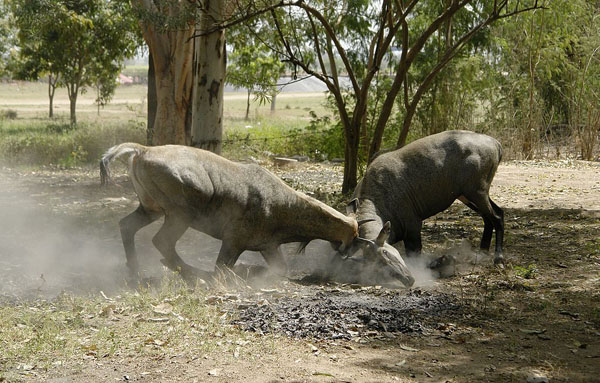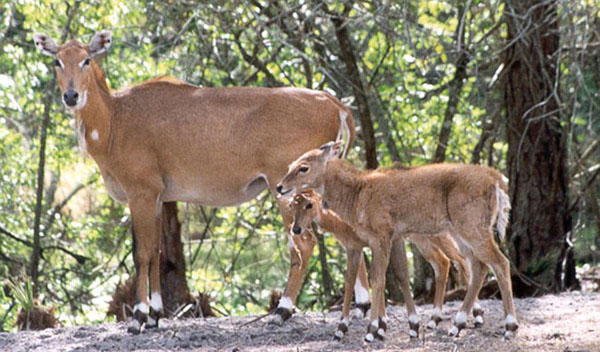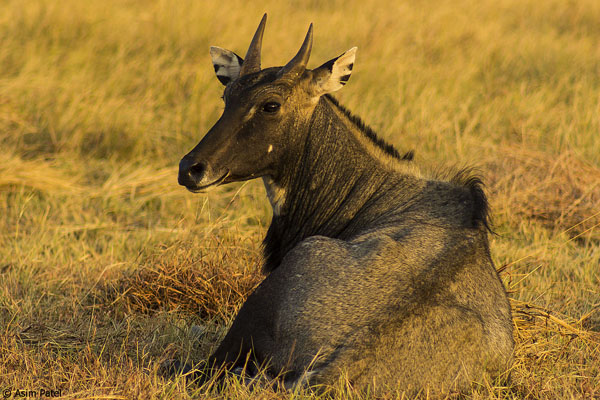South Texas is a biological treasure trove, as I’ve written in previous blogs. During my week there, I saw birds galore, butterflies, indigo snakes, tortoises, alligators, javelinas and a host of other wondrous beasts.
There was one frequent sighting that was perhaps even more surprising: the nilgai, a bluish, 600-pound Asian antelope that now roams freely along the Texas-Mexico border.
A large, blue Asian antelope. In Texas.
Most large mammals in Asia have not fared well due to habitat loss and poaching. But the nilgai survives quite well, in both its native land and its new North American home.
It is an adaptable animal, yes, but that is only part of the story. The underlying reason for its abundance is human values, desires and even religious beliefs.
Once, the nilgai was a creature of India’s vast plains, where it was stalked by tigers lurking in the brush. Where it roamed alongside great herds of other antelopes and elephants. A creature of the wilderness.
Today, you’re more likely to find one browsing grass on the outskirts of a 10-million-person city, or kicking up sand on a Gulf Coast beach. It is, in short, an antelope of the Anthropocene.

The Blue Bull
Historically, the nilgai roamed in large herds across many parts of India, Pakistan, Bangladesh and Nepal.
Male nilgai have a striking bluish tint, with white highlights on the cheek and throat. They have two conical horns that are not as long as those of many antelope, but are still noticeable. Females and young are a tawny color and lack horns, but otherwise resemble the males.
Both male and female nilgai use “latrine sites” where they defecate regularly to demarcate territories. (These piles are easily seen in Texas. We frequently drove over them on ranch roads).
Many large mammals in India – think tigers, elephants, one-horned rhinos – face perilous futures. You would be unlikely to find them outside of national parks.
The nilgai still has a strong population. It can be seen in farm fields, around monuments, even in suburbs.
It is pretty adaptable in its habitat needs, to be sure. But there’s more: in India, the nilgai is believed to be a cow, a sacred animal in the Hindu faith. In fact, “nilgai” derives from the Hindi nilgaw, meaning “blue cow.”
While habitat loss is still a major issue, the nilgai is not threatened with extinction in its native land.

Home on the Range
And then there’s Texas. In 1930, the expansive King Ranch – at 825,000 acres, still the largest in the country – bought two of the animals from the San Diego Zoo. Those didn’t breed, but about ten years later, they purchased 13 more from zoos.
Those did breed. And thrived.
They expanded beyond the King Ranch and roam freely in the southernmost Texas counties. I saw them on Laguna Atascosa National Wildlife Refuge and Nature Conservancy easement properties.
The King Ranch introduced the animals for hunting. They are now a popular game animal, and I frequently heard about the tastiness of their meat. But the nilgai is wary and able to move through surprisingly thick brush with little difficulty.
I only got fleeting glimpses of them in Texas, often running full speed. In India, where they’re not hunted, I observed them closely in parks and lodge grounds alike.
Some landowners now pay sharpshooters to control them from helicopters. Their expansion is limited by their thin coats; they tolerate cold winters poorly.
Still, the population is healthy in Texas, and according to some reports, northern Mexico as well.
An oft-repeated claim is that there are now more nilgai living in Texas than in its native India. That makes for an interesting story, but I have found no evidence that it’s true.
There are widely varying estimates of the number of nilgai in most places. There are at least 30,000 in Texas, and probably more than 100,000 in India.
But the nilgai was just the first of many Asian and African large mammals introduced to Texas. And some of those are more numerous here than in their native habitat. Species like the scimitar-horned oryx and addax are extinct in the Middle East, but thriving on game ranches.
That fact raises a lot of issues for conservationists. Are game ranches harboring non-native pests, or performing a valuable conservation service?
That’s a new dilemma. It seems easy (usually) for conservationists to address noxious non-native weeds. It’s a lot less easy to think clearly when it’s a large and beautiful non-native animal.
That doesn’t matter to the nilgai, of course. It’s adapting and thriving — amongst millions in developing India, and equally at home on the range in Texas.
And I’ll admit it: as a big nilgai bull sneaks through a wall of tangled, thorny brush like a blue ghost, I see a survivor – a survivor strongly assisted by human whim, but a survivor just the same.




I just learned about them, reading J. Verns “steam house”. Thanks for the information.
Protection of the environment is very essential to our well-being. Let’s make better choice for the betterment of ourselves and our future generations to come. Thanks and God bless you all!
Thanks again for a great piece. It is always a conundrum with introduced species and thanks for highlighting. Cheat grass along with chukars … both from the same area and one seen as invasive and to be eradicated and the other to be nurtured. Chukars seem to have filled a bit of a void in the ecosystem without negatively impacting other native species here in Idaho.